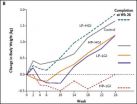(Press-News.org) The new results, from a team led by Grzegorz Pietrzyński (Universidad de Concepción, Chile, Obserwatorium Astronomiczne Uniwersytetu Warszawskiego, Poland), appear in the 25 November 2010 edition of the journal Nature.
Grzegorz Pietrzyński introduces this remarkable result: "By using the HARPS instrument on the 3.6-metre telescope at ESO's La Silla Observatory in Chile, along with other telescopes, we have measured the mass of a Cepheid with an accuracy far greater than any earlier estimates. This new result allows us to immediately see which of the two competing theories predicting the masses of Cepheids is correct."
Classical Cepheid Variables, usually called just Cepheids, are unstable stars that are larger and much brighter than the Sun [1]. They expand and contract in a regular way, taking anything from a few days to months to complete the cycle. The time taken to brighten and grow fainter again is longer for stars that are more luminous and shorter for the dimmer ones. This remarkably precise relationship makes the study of Cepheids one of the most effective ways to measure the distances to nearby galaxies and from there to map out the scale of the whole Universe [2].
Unfortunately, despite their importance, Cepheids are not fully understood. Predictions of their masses derived from the theory of pulsating stars are 20% less than predictions from the theory of the evolution of stars. This embarrassing discrepancy has been known since the 1960s.
To resolve this mystery, astronomers needed to find a double star containing a Cepheid where the orbit happened to be seen edge-on from Earth. In these cases, known as eclipsing binaries, the brightness of the two stars dims as one component passes in front of the other, and again when it passes behind the other star. In such pairs astronomers can determine the masses of the stars to high accuracy [3]. Unfortunately neither Cepheids nor eclipsing binaries are common, so the chance of finding such an unusual pair seemed very low. None are known in the Milky Way.
Wolfgang Gieren, another member of the team, takes up the story: "Very recently we actually found the double star system we had hoped for among the stars of the Large Magellanic Cloud. It contains a Cepheid variable star pulsating every 3.8 days. The other star is slightly bigger and cooler, and the two stars orbit each other in 310 days. The true binary nature of the object was immediately confirmed when we observed it with the HARPS spectrograph on La Silla."
The observers carefully measured the brightness variations of this rare object, known as OGLE-LMC-CEP0227 [4], as the two stars orbited and passed in front of one another. They also used HARPS and other spectrographs to measure the motions of the stars towards and away from the Earth — both the orbital motion of both stars and the in-and-out motion of the surface of the Cepheid as it swelled and contracted.
This very complete and detailed data allowed the observers to determine the orbital motion, sizes and masses of the two stars with very high accuracy — far surpassing what had been done before for a Cepheid. The mass of the Cepheid is now known to about 1% and agrees exactly with predictions from the theory of stellar pulsation. However, the larger mass predicted by stellar evolution theory was shown to be significantly in error.
The much-improved mass estimate is only one outcome of this work, and the team hopes to find other examples of these remarkably useful pairs of stars to exploit the method further. They also believe that from such binary systems they will eventually be able to pin down the distance to the Large Magellanic Cloud to 1%, which would mean an extremely important improvement of the cosmic distance scale.
INFORMATION:
Notes
[1] The first Cepheid variables were spotted in the 18th century and the brightest ones can easily be seen to vary from night to night with the unaided eye. They take their name from the star Delta Cephei in the constellation of Cepheus (the King), which was first seen to vary by John Goodricke in England in 1784. Remarkably, Goodricke was also the first to explain the light variations of another kind of variable star, eclipsing binaries. In this case two stars are in orbit around each other and pass in front of each other for part of their orbits and so the total brightness of the pair drops. The very rare object studied by the current team is both a Cepheid and an eclipsing binary. Classical Cepheids are massive stars, distinct from similar pulsating stars of lower mass that do not share the same evolutionary history.
[2] The period luminosity relation for Cepheids, discovered by Henrietta Leavitt in 1908, was used by Edwin Hubble to make the first estimates of the distance to what we now know to be galaxies. More recently Cepheids have been observed with the Hubble Space Telescope and with the ESO VLT on Paranal to make highly accurate distance estimates to many nearby galaxies.
[3] In particular, astronomers can determine the masses of the stars to high accuracy if both stars happen to have a similar brightness and therefore the spectral lines belonging to each of the two stars can be seen in the observed spectrum of the two stars together, as is the case for this object. This allows the accurate measurement of the motions of both stars towards and away from Earth as they orbit, using the Doppler effect.
[4] The name OGLE-LMC-CEP0227 arises because the star was first discovered to be a variable during the OGLE search for gravitational microlensing. More details about OGLE are available at: http://ogle.astrouw.edu.pl/.
More information
This research was presented in a paper to appear in the journal Nature on 25 November 2010.
The team is composed of G. Pietrzyński (Universidad de Concepción, Chile, Obserwatorium Astronomiczne Uniwersytetu Warszawskiego, Poland), I. B. Thompson (Carnegie Observatories, USA), W. Gieren (Universidad de Concepción, Chile), D. Graczyk (Universidad de Concepción, Chile), G. Bono (INAF-Osservatorio Astronomico di Roma, Universita' di Roma, Italy), A. Udalski (Obserwatorium Astronomiczne Uniwersytetu Warszawskiego, Poland), I. Soszyński (Obserwatorium Astronomiczne Uniwersytetu Warszawskiego, Poland), D. Minniti (Pontificia Universidad Católica de Chile) and B. Pilecki (Universidad de Concepción, Chile, Obserwatorium Astronomiczne Uniwersytetu Warszawskiego, Poland).
ESO, the European Southern Observatory, is the foremost intergovernmental astronomy organisation in Europe and the world's most productive astronomical observatory. It is supported by 14 countries: Austria, Belgium, the Czech Republic, Denmark, France, Finland, Germany, Italy, the Netherlands, Portugal, Spain, Sweden, Switzerland and the United Kingdom. ESO carries out an ambitious programme focused on the design, construction and operation of powerful ground-based observing facilities enabling astronomers to make important scientific discoveries. ESO also plays a leading role in promoting and organising cooperation in astronomical research. ESO operates three unique world-class observing sites in Chile: La Silla, Paranal and Chajnantor. At Paranal, ESO operates the Very Large Telescope, the world's most advanced visible-light astronomical observatory and VISTA, the world's largest survey telescope. ESO is the European partner of a revolutionary astronomical telescope ALMA, the largest astronomical project in existence. ESO is currently planning a 42-metre European Extremely Large optical/near-infrared Telescope, the E-ELT, which will become "the world's biggest eye on the sky".
Links
- Research letter to Nature link: http://www.eso.org/public/archives/releases/sciencepapers/eso1046/eso1046.pdf
Contacts
Grzegorz Pietrzyński
Universidad de Concepción
Chile
Tel: +56 41 220 7268
Cell: +56 9 6245 4545
Email: pietrzyn@astrouw.edu.pl
Wolfgang Gieren
Universidad de Concepción
Chile
Tel: +56 41 220 3103
Cell: +56 9 8242 8925
Email: wgieren@astro-udec.cl
Richard Hook
ESO, La Silla, Paranal, E-ELT and Survey Telescopes Public Information Officer
Garching bei München, Germany
Tel: +49 89 3200 6655
Cell: +49 151 1537 3591
Email: rhook@eso.org
Pulsating star mystery solved
2010-11-25
ELSE PRESS RELEASES FROM THIS DATE:
Bonn physicists create a 'super-photon'
2010-11-25
By cooling Rubidium atoms deeply and concentrating a sufficient number of them in a compact space, they suddenly become indistinguishable. They behave like a single huge "super particle." Physicists call this a Bose-Einstein condensate.
For "light particles," or photons, this should also work. Unfortunately, this idea faces a fundamental problem. When photons are "cooled down," they disappear. Until a few months ago, it seemed impossible to cool light while concentrating it at the same time. The Bonn physicists Jan Klärs, Julian Schmitt, Dr. Frank Vewinger, and Professor ...
Erythromycin A produced in E. coli for first time
2010-11-25
MEDFORD/SOMERVILLE, Mass. -- Researchers at Tufts University School of Engineering have reported the first successful production of the antibiotic erythromycin A, and two variations, using E. coli as the production host.
The work, published in the November 24, 2010, issue of Chemistry and Biology, offers a more cost-effective way to make both erythromycin A and new drugs that will combat the growing incidence of antibiotic resistant pathogens. Equally important, the E. coli production platform offers numerous next-generation engineering opportunities for other natural ...
How pathogens hijack host plants
2010-11-25
Palo Alto, CA— Infestation by bacteria and other pathogens result in global crop losses of over $500 billion annually. A research team led by the Carnegie Institution's Department of Plant Biology developed a novel trick for identifying how pathogens hijack plant nutrients to take over the organism. They discovered a novel family of pores that transport sugar out of the plant. Bacteria and fungi hijack the pores to access the plant sugar for food. The first goal of any pathogen is to access the host's food supply to allow them to reproduce in large numbers. This is the ...
UCLA researchers discover drug resistance mechanisms in most common form of melanoma
2010-11-25
Researchers with UCLA's Jonsson Comprehensive Cancer Center have found that melanoma patients whose cancers are caused by mutation of the BRAF gene become resistant to a promising targeted treatment through another genetic mutation or the overexpression of a cell surface protein, both driving survival of the cancer and accounting for relapse.
The study, published Nov. 24, 2010, in the early online edition of the peer-reviewed journal Nature, could result in the development of new targeted therapies to fight resistance once the patient stops responding and the cancer ...
Researchers shine light on how some melanoma tumors evade drug treatment
2010-11-25
The past year has brought to light both the promise and the frustration of developing new drugs to treat melanoma, the most deadly form of skin cancer. Early clinical tests of a candidate drug aimed at a crucial cancer-causing gene revealed impressive results in patients whose cancers resisted all currently available treatments. Unfortunately, those effects proved short-lived, as the tumors invariably returned a few months later, able to withstand the same drug to which they first succumbed. Adding to the disappointment, the reasons behind these relapses were unclear.
Now, ...
An answer to a longstanding question: How HIV infection kills T cells
2010-11-25
Researchers appear to have an explanation for a longstanding question in HIV biology: how it is that the virus kills so many CD4 T cells, despite the fact that most of them appear to be "bystander" cells that are themselves not productively infected. That loss of CD4 T cells marks the progression from HIV infection to full-blown AIDS, explain the researchers who report their findings in studies of human tonsils and spleens in the November 24th issue of Cell, a Cell Press publication.
"In [infected] primary human tonsils and spleens, there is a profound depletion of CD4 ...
Danish researchers finally solve the obesity riddle
2010-11-25
Researchers at the Faculty of Life Sciences (LIFE), University of Copenhagen, can now unveil the results of the world's largest diet study:
If you want to lose weight, you should maintain a diet that is high in proteins with more lean meat, low-fat dairy products and beans and fewer finely refined starch calories such as white bread and white rice. With this diet, you can also eat until you are full without counting calories and without gaining weight. Finally, the extensive study concludes that the official dietary recommendations are not sufficient for preventing obesity. ...
Whale sharks do the math to avoid that sinking feeling
2010-11-25
They are the largest fish species in the ocean, but the majestic gliding motion of the whale shark is, scientists argue, an astonishing feat of mathematics and energy conservation. In new research published today in the British Ecological Society's journal Functional Ecology marine scientists reveal how these massive sharks use geometry to enhance their natural negative buoyancy and stay afloat.
For most animals movement is crucial for survival, both for finding food and for evading predators. However, movement costs substantial amounts of energy and while this is true ...
Fatal blood clot genetic risk breakthrough announcement
2010-11-25
An international team led by researchers from the Universities of Leicester and Cambridge has announced a breakthrough in identifying people at risk of developing potentially fatal blood clots that can lead to heart attack.
The discovery, published this week (25 November) in the leading haematology journal Blood, is expected to advance ways of detecting and treating coronary heart disease – the most common form of disease affecting the heart and an important cause of premature death.
The research led by Professor Alison Goodall from the University of Leicester and Professor ...
Growth-factor gel shows promise as hearing-loss treatment
2010-11-25
A new treatment has been developed for sudden sensorineural hearing loss (SSHL), a condition that causes deafness in 40,000 Americans each year, usually in early middle-age. Researchers writing in the open access journal BMC Medicine describe the positive results of a preliminary trial of insulin-like growth factor 1 (IGF1), applied as a topical gel.
Takayuki Nakagawa, from Kyoto University, Japan, worked with a team of researchers to test the gel in 25 patients whose SSHL had not responded to the normal treatment of systemic gluticosteroids. He said, "The results indicated ...



